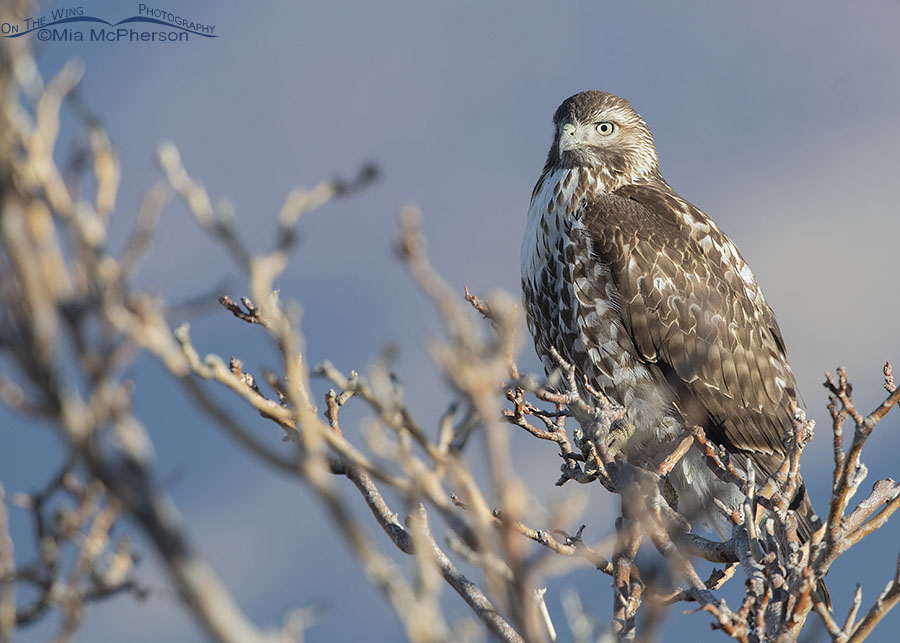 Immature Red-tailed Hawk perched in front of the Wasatch Mountains – Nikon D500, f7.1, 1/1000, ISO 500, +0.3 EV, Nikkor 500mm VR with 1.4x TC, natural light, not baited
Immature Red-tailed Hawk perched in front of the Wasatch Mountains – Nikon D500, f7.1, 1/1000, ISO 500, +0.3 EV, Nikkor 500mm VR with 1.4x TC, natural light, not baited
I photograph tons of Red-tailed Hawks. I have shared more Red-tailed Hawk articles on my blog and images in my photo galleries than any other bird species. I find Red-tailed Hawks in the deserts, foothills, mountains, marshes, valleys, canyons, ranchlands, sagebrush steppes, alpine meadows, farmlands, forests, along freeways, and in many different kinds of urban settings.
Each and every time I spot a Red-tailed Hawk I can feel my heart skip a beat and my pulse quicken because I don’t always know what kind of images I will be able to take of them. I don’t always know what morph they will be when I spot them from a long way away or whether they will be adult or immature birds until I can get close enough to pick up on visual keys. I have bird guide quality images of these raptors. I also have some photos that I like simply because they show the Red-tailed Hawks in a way that most people see them. This is one of those photos.
When I first took a series of photos of this immature Red-tailed Hawk perched in front of the Wasatch Mountains I wasn’t sure if I liked the resulting images at all. I considered deleting each and every one of them because of the messy, out of focus branches in front of the young bird of prey. It has been close to a year since I photographed the Red-tailed Hawk and I’m glad now that I didn’t just delete the photos.
I like the snow tipped Wasatch Mountains in the back ground with some parts of the peaks still in the shadows. I like the regal pose of the young Red-tailed Hawk, the light on the bird, and now I don’t find those light colored, blurry branches nearly as distracting as I did when I first took the photos. Over time I’ve come to appreciate this image just as it is.
Life is good.
Mia
Click here to see more of my Red-tailed Hawk photos plus facts and information about this species.


Thank goodness you kept it! I love the effect of the out of focus branches – they add warm color, and they imply that the hawk is half-hiding in the brush.
I like it too. Lots. And envy your sightings – and am glad that you share them.